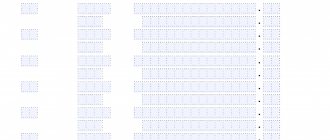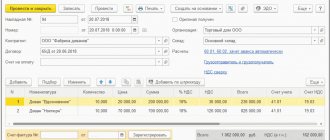OKVED concept
After registration, companies are assigned individual numbers and codes that reflect the selected type of activity in a digital designation. It is called OKVED - the all-Russian classifier of types of economic activity. Codes are also assigned to companies engaged in cargo transportation and transport services.
Variety of modes of transport to provide services
Rules for choosing economic codes
According to OKVED, cargo transportation can be carried out by different modes of transport. Accordingly, the codes will differ depending on the specific type of activity, as well as the transport used to provide the service. They mostly coincide in the Russian Federation, the Republic of Belarus and the Republic of Kazakhstan. In Belarus and Kazakhstan, some are different, as they are adapted to local legislation.
Attention! The OKVED directory for cargo transportation in 2022 has not changed. At the moment, the numerical designations remain the same as they were.
Transport services in 2022 are assigned OKVED numbers immediately after registration of a legal entity or individual entrepreneur. The company is obliged to conduct its trucking operations in strict accordance with this code. If the direction of activity changes, you need to contact the Federal Tax Service within 3 working days and report the changes. Subsequently, the enterprise is assigned a new code corresponding to its current activity profile.
In accordance with OKVED, transport services are provided in different ways. In general, such activities are divided into transportation and storage. The first numerical designation indicates the type of vehicle:
- 49 – land or pipeline;
- 50 – water;
- 51 – air (or space, but such transport services are not provided by logistics LLCs or individual entrepreneurs).
It is also envisaged that firms will provide additional services:
- 52 – auxiliary transport services, mainly provided in the field of agriculture;
- 53 – public postal or private courier services.
The indicated numerical designations correspond only to class affiliation: just these 2 numbers will not be enough. A more detailed identification of activities by profile will definitely be required.
OKVED codes for organizing road freight transportation
OKVED class 52 Warehousing and auxiliary transport activities. This grouping includes:
- warehousing (storage) and auxiliary activities during transportation, such as the activities of transport infrastructure (airports, ports, tunnels, bridges, etc.);
- activities of transport agencies;
- loading and unloading operations
Individual entrepreneurs, like large LLCs, can choose any type of transport to transport cargo. The legislation does not impose any restrictions. There are road, rail, sea and air cargo transportation.
At the same time, according to paragraph 1 of Article 2 of the Civil Code of the Russian Federation (hereinafter referred to as the Civil Code of the Russian Federation), independent activity carried out at one’s own risk, aimed at systematically obtaining profit from the use of property, sale of goods, performance of work or provision of services by persons registered in this capacity, is recognized as entrepreneurial. in the manner prescribed by law.
At its core, the OKVED directory is a statistical, analytical and accounting tool, with the help of which the activities of business entities are monitored, the rate of insurance premiums for an economic entity is determined, and territorial accounting policies are systematized.
Cargo transportation is a fairly profitable type of business. But for beginning entrepreneurs who decide to engage in this type of activity, choosing the appropriate OKVED encoding from the classifier can be a big problem. What are the specifics of choosing a code? What will be the OKVED code for organizing cargo transportation in 2022? More on this later.
But, as we have already noted, three digits in the OKVED code are not enough to register a business, so we look further:
- 49.41 Activities of road freight transport;
- 49.41.1: Transportation of goods by specialized vehicles;
- 49.41.2: Transportation of goods by non-specialized vehicles;
- 49.41.3: Rental of freight vehicles with driver;
- 49.42: Provision of transportation services.
Indeed, 52.29 in this case is the OKVED required for you. 63.40. was previously, currently no longer active edition.
The tractor is considered one of the most common types of special equipment; thanks to the possibility of using attachments on it, its functionality is significantly expanded. You can rent out a tractor with or without an operator, so when registering the code, you should take into account all options for future activities.
The following are examples of related services for the transportation of goods, the OKVED of which is in sections 52-53:
- warehousing and storage of goods;
- operation and maintenance of vehicles;
- towing and road maintenance activities;
- operation of railway and bus stations;
- parking services;
- activities of postal and courier services, etc.
All forwarding routes are divided into groups:
- intracity;
- interregional;
- international.
In the first case, code 77.32 (rent and leasing of machinery and equipment used for construction) will be relevant.
Who is it suitable for: companies that perform turnkey repairs. This code can be used by plasterers, installers of doors, windows, ceilings and partitions, furniture assemblers, tilers, floor layers, wallpaper gluers, painters, glaziers, and roofers. This also includes cleaning of premises after completion of construction and repairs and other work.
Letter codes do not carry an independent code load and meaning, since the six-digit digital code designation is unique to the classifier as a whole.
OKVED codes “Cargo transportation” are grouped in section “N” “Transportation and storage” of the OKVED-2 classifier. Identifiers associated with this type of activity are located in sections 49, 50, 51. This is where you need to look for codes for use when transporting by such modes of transport:
- ground (subclass 49.3, 49.4);
- railway (subclass 49.1, 49.2);
- water and sea (subclass 50.1, 50.2, 50.3, 50.4);
- air and space (subclass 51.1, 51.2);
- pipeline (subclass 49.5).
Leave a comment if 1) you have additional information on the classifier code, 2) you have noticed errors and inaccuracies, 3) you want to ask a question that can be answered by other site users.
Using the classifier, you can easily determine which OKVED codes are suitable for the types of work that you have planned. These codes must be written down in the charter of the contractor company from which you rent special equipment.
The materials on the site are for reference purposes only, are intended for informational purposes only and are not exact copies of official documents.
Working with us is the key to honest professional cooperation and high-quality performance of work in accordance with the lease agreement.
To conduct business, it is advisable to choose ciphers with four or six digits. This will help to specify the type of work of the company, which will significantly simplify the taxation process, including the single tax on imputed income (UTI), as well as how accounting will be done.
For road transport
Note! According to OKVED statistics, cargo transportation by road in 2022 is the most popular direction among the variety of transport services.
Therefore, the first in the digital designation will be 49; a subclass is also selected - 49.4, which means that the enterprise provides relevant services in road transport, mainly related to the transportation of passengers or goods. Ordinary vehicles can also be used if a very small load needs to be delivered.
Any vehicle can be used
But the above 3 numbers are not enough to register an enterprise officially. Subclass 49.41 - road freight transport is also divided into:
- …1 – use of specialized vehicles;
- …2 – use of non-specialized vehicles;
- …3 – use of trucks driven by a corporate driver.
Subclass 49.42 is transportation-related services.
The list of OKVED codes for freight transportation in 2022 for individual entrepreneurs and LLCs has been supplemented with additional items:
- 52.10 – storage;
- 52.21 – auxiliary services on land vehicles, including the use of a truck or other large-scale transport;
- 52.24 – processing;
- 52.29 – other ancillary services related to the transportation of goods.
Also, the numerical series is supplemented if services are provided by couriers:
- 53.20.3 – delivery by courier;
- 53.20.31 – delivery by courier by car, taxi or other transport;
- 53.20.39 – other courier delivery services.
Transportation by land transport
The OKVED code “Passenger transportation” is selected as follows:
- Let's go to the OKVED-2 classifier.
- We look for section “H” (Transportation and storage) in the directory.
- We move on to class 49 “Activities of land and pipeline transport.”
- We are looking for the necessary subclasses: 49.1 (railway transportation); 49.3 (land passenger transport).
- In this subclass we select the desired type of activity.
For example, subclass 49.3 includes the following types of business activities related to the transportation of passengers:
- 49.31 – intracity and suburban transportation;
- 49.31.21 – regular transportation by buses;
- 49.39 – transportation by other ground transport not included in any of the groups;
- 49.39.11 – international transportation by bus according to schedule;
- 49.39.2 – transportation by funiculars;
- 49.39.31 – rental of buses with driver, etc.
OKVED code taxi
Taxis are a common type of intracity/intercity passenger transportation by ground transport. The OKVED taxi code will be useful for a novice entrepreneur who has decided to occupy this particular niche. To organize a business, you must obtain the appropriate license.
The OKVED code for a taxi will be:
- 49.32 – Activities of passenger taxis.
This group also includes rental of cars with a driver.
Taxi services can be provided by both individual entrepreneurs and organizations. But the OKVED code will be the same in both cases, since the scale of the business does not affect it.
Rail transportation
This type of passenger transportation is assigned to subclass 49.1. Here you can find the following OKVED codes:
- 49.10.1 – intercity transportation;
- 49.10.2 – in international traffic.
For cargo transportation by other modes of transport
Since cargo is delivered not only by road transport, but also by other means, there are other groups/subgroups in the OKVED list.
Nautical
When an enterprise plans to provide transportation-related services through the use of sea cargo or other vessels, it is assigned code 50.20. The group includes:
- Standard sea transportation.
- Transportation by towing.
- Renting ships (possibly with your own onboard crew) for cargo transportation.
Inland waterway
To provide services within the framework of inland water freight transportation, companies receive code 50.40. The group includes:
- Transportation along inland waterways and water areas.
- Mixed transport, for example, partly by rivers and seas.
- Transportation of nuclear weapons or waste across waters.
- Rental of vessels for the provision of services within the framework of mediation activities.
Air
For the transportation of goods by air, code 50.21 is selected.
Note! The group includes independent and separate transportation, as well as rental of transport in general, or a luggage compartment in particular for the provision of the corresponding service.
OKVED codes for other modes of transport
Cargo is delivered not only by road, but also by other modes of transport: sea, inland waterway, air. Each of them has its own groups and subgroups.
Activities of sea freight transport
For transporting goods by sea, you can choose code 50.20. This group includes the following activities:
- transportation of goods in sea and coastal waters;
- transportation of goods on non-self-propelled vessels by towing or pushing;
- rental of ships with crew for cargo transportation.
If you indicate only code 50.20, you will also be able to engage in all activities that are included in this group. Or you can choose only some highly specialized codes of five or six digits:
- 50.20.1: Transportation of goods by sea vessels of foreign navigation;
- 50.20.11: Transportation of frozen or refrigerated cargo by refrigerator ships traveling abroad;
- 50.20.12: Transportation of crude oil by sea tanker vessels of foreign navigation;
- 50.20.13: Transportation of other liquids or gases by sea tankers; overseas voyages
- 50.20.14: Transportation of container cargo by container ships traveling abroad;
- 50.20.15: Transportation of dry bulk cargo by sea vessels traveling abroad;
- 50.20.16: Transportation (carriage) of nuclear materials, radioactive substances, radiation sources, parts of nuclear installations, radioactive waste by sea vessels traveling abroad;
- 50.20.19: Transportation of other cargo by sea vessels traveling abroad;
- 50.20.2: Transportation of goods by coastal vessels;
- 50.20.21: Transportation of frozen or refrigerated cargo by coastal refrigerated vessels;
- 50.20.22: Transportation of crude oil by coastal tanker vessels;
- 50.20.23: Transportation of other liquids or gases by coastal tanker vessels;
- 50.20.24: Transportation of container cargo by coastal container ships;
- 50.20.25: Transportation of dry bulk cargo by coastal vessels;
- 50.20.26: Transportation (carriage) of nuclear materials, radioactive substances, radiation sources, parts of nuclear installations. radioactive waste from coastal shipping vessels;
- 50.20.29: Transportation of other cargo by coastal vessels;
- 50.20.3: Lease of sea vessels for foreign and coastal navigation for the transportation of goods with crew;
- 50.20.31: Lease of sea vessels for foreign navigation for the transportation of goods with crew;
- 50.20.32: Lease of coastal vessels for transportation of goods with crew;
- 50.20.4: Towing and shunting services provided by vessels of foreign and coastal navigation;
- 50.20.41: Towing by vessels of foreign and coastal navigation;
- 50.20.42: Activities for the provision of shunting services by vessels of foreign and coastal navigation.
Activities of inland water freight transport
Here, too, you can limit yourself to choosing one four-digit code 50.40, which includes:
- transportation of goods along inland waterways, including in the waters of river ports;
- transportation of goods along sea routes on mixed (river-sea) navigation vessels:
- transportation of nuclear materials, radioactive substances, radiation sources, parts of nuclear installations, radioactive waste via inland waterways;
- rental of vessels with crew for transportation of goods along inland waterways and sea routes on mixed (river-sea) navigation vessels.
Or make a more detailed selection from these codes:
- 50.40.1: Transport of goods by inland waterways;
- 50.40.2: Towing and shunting services on inland waterways;
- 50.40.3: Lease of inland water transport vessels for the carriage of goods with crew.
Air cargo transport activities
The general group code for this type of cargo transportation is 51.21. By specifying it, you can do:
- transportation of goods by air;
- rental of an aircraft for the carriage of goods with a crew.
For a more detailed selection, you can specify:
- 51.21.1: Transportation by scheduled air freight;
- 51.21.2: Transportation by air cargo transport not subject to a schedule;
- 51.21.3: Lease of cargo aircraft with crew.
OKVED logistics
Logistics refers not so much to freight or other transportation as to planning and creating suitable routes.
An example of how many factors need to be taken into account when creating competent logistics for transporting goods
Such activities are called auxiliary activities and are assigned code 52.29. The group includes the following areas:
- sending cargo according to schedule;
- preparation for departure, organizational activities, forwarding;
- work with transport documents, various waybills and others;
- distribution and activities related to the optimal sorting of goods for fast and profitable transportation;
- brokerage customs activities, consultations and professional information support for clients;
- intermediary service;
- auxiliary services for preserving or preparing various items for transportation, for example, strengthening packaging or placing items in protective film to prevent contact with water.
This group does not include the following types of services:
- postal or courier deliveries (53);
- insurance of transport or cargo (65.12);
- travel services, including transportation of passengers to attractions, airport transfers or similar (79.11, 79.12, 79.90).
Also included in the group and subgroup is code 63.40. This includes:
- transport or forwarding services provided within one company;
- private or corporate activities of customs brokers or forwarders;
- drawing up the best and most optimal routes.
Logistics companies can offer a wide range of services simultaneously.
Note! Most often, clients are interested in transfer products.
For example, they want to send a single or large shipment to another country or even to another continent. In this case, they hire logisticians who draw up competent routes with possible transfers of cargo from one type of transport to another.
Transport services
Classes of OKVED codes for transport services:
- 49 – land;
- 50 – water;
- 51 – air and space;
- 52 – auxiliary (for example, storage);
- 53 – courier.
Areas of activity that are not related to transport services:
- technical service of cars and other types of transport;
- vehicle repair;
- car rental without hiring drivers;
- construction of tracks, highways, railways, aircraft runways and landing strips, as well as maintenance and servicing of these communications.
UTII and features
UTII (unified tax on imputed income) is a taxation format in which an entrepreneur will need to pay a fixed amount to the state treasury, regardless of the amount of income he received. For large forwarding organizations, such a tax is more profitable than a simplified one.
The main feature of “imputations” is that the entrepreneur pays a fixed amount. If his income increases, this does not affect the tax. The simplified tax rate directly depends on income, and if the company does not receive it, then no tax is paid. This option is more profitable for a small entrepreneur who is just starting his work.
Which code to choose
Managerial employees of the enterprise must select a code when registering an individual entrepreneur, LLC or other legal entity
You cannot choose the OKVED code you want: there is a system according to which the selection is made
The encoding includes the following levels:
- 2 digits – levels;
- 3 – sublevels;
- 4 – groups (for example, 49.41, 49.42, 60.24);
- 5 – subgroups;
- 6 – type of activity.
The encoding must be complete, including all 6 numbers of this digital series. The classification is reviewed and changed from time to time.
Attention! Some 2022 codes are no longer relevant in 2022. Therefore, entrepreneurs are advised to always follow the latest news to avoid problems.
Thus, in order to legally carry out business activities, it is necessary to choose the correct OKVED code. If a businessman cannot do this on his own, it is permissible to contact the relevant authorities and describe the potential work of the company. They will select the appropriate code based on the law and experience.
Why are OKVED codes for transportation needed?
The digital OKVED code for any activity is an important indicator, without which it is impossible to fill out form P21001. If you do not include the codes in the application, then the individual entrepreneur will not simply be registered.
The rate of contributions for insurance of workers against occupational diseases and injuries depends on the OKVED code. Partners pay attention to it when concluding deals. The OKVED code must correspond to the actual activities of the individual entrepreneur.
And using the main code, it becomes clear whether an entrepreneur can choose a special tax regime or receive another benefit. For example, if the main activity of an individual entrepreneur is passenger or cargo transportation (by sea, river and aircraft), then transport tax is not levied on it.
Free consultation on individual entrepreneur registration




